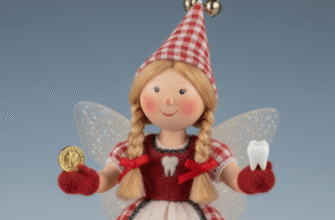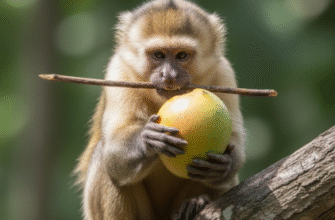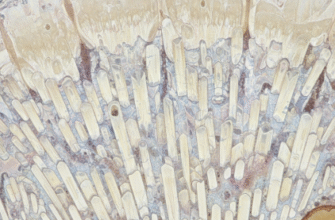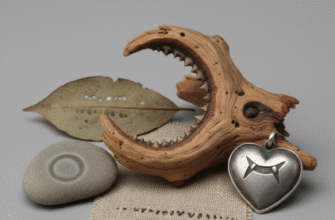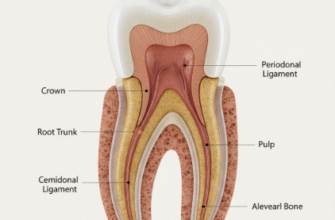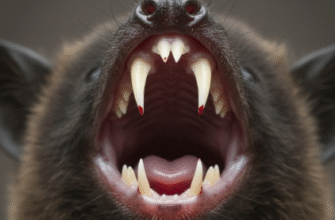Across the vast tapestry of human history, long before the written word chronicled our deepest beliefs, ancient cultures wove intricate connections with the natural world. Animals, in particular, were not merely cohabitants of the earth; they were symbols, spirits, and sources of incredible power. Among the most potent and frequently utilized animal parts in rituals for good luck, protection, or the augmentation of personal strength were teeth. These sharp, enduring remnants of life held a primal fascination, embodying the very essence of the creatures from which they came.
The Enduring Allure of Animal Dentition
But why teeth? What made these small, often formidable pieces of bone so significant in the spiritual and ritualistic lives of our ancestors? The reasons are manifold, rooted in direct observation and profound symbolism. Teeth are, first and foremost, instruments of power. The fang of a wolf, the tusk of a boar, or the incisor of a bear spoke directly of the animal’s ability to hunt, defend, and survive. To possess such a tooth was, in a symbolic sense, to borrow or internalize a measure of that creature’s inherent might.
Moreover, teeth represent vitality and endurance. Unlike flesh, which decays rapidly, teeth and bone persist long after death, becoming tangible links to the animal’s spirit or life force. Their hardness and resilience made them ideal for crafting into amulets and talismans that could withstand the rigors of daily life and the passage of time. The loss of one’s own teeth often signified aging or a decline in strength, so the teeth of powerful animals could be seen as a countermeasure, a way to hold onto vigor.
Consider the practical aspect as well. Teeth were tools – for tearing, gripping, and processing food. In a world where survival was a daily challenge, anything that enhanced one’s ability to overcome obstacles or procure resources held immense value. This practical power easily translated into perceived magical or spiritual power.
Echoes from the North: Viking and Germanic Traditions
In the harsh, unforgiving landscapes of ancient Scandinavia and Germanic Europe, warriors and chieftains often sought to align themselves with the most formidable beasts of their environment. The bear and the wolf were particularly revered. Archaeological finds have unearthed necklaces and pendants featuring bear or wolf teeth, sometimes intricately carved or set in metal. These were not mere decorations; they were potent symbols of a warrior’s ferocity, courage, and connection to the wild strength embodied by these apex predators.
It is believed that wearing a bear’s tooth, for instance, could grant the wearer the bear’s resilience and unyielding power in battle. Similarly, a wolf’s tooth might be sought to imbue the wearer with cunning, pack loyalty, or the ferocity of a hunting wolf. These items were often personal, perhaps even acquired through a significant hunt, making the connection to the animal spirit even more direct and potent. The Sagas and Eddas, while not always explicit about tooth rituals, paint a vivid picture of a world where the attributes of powerful animals were deeply respected and emulated.
Across Turtle Island: Indigenous American Perspectives
The diverse cultures of Native America held a profound respect for the animal kingdom, viewing animals as relatives and teachers. The use of animal teeth varied widely but often carried deep spiritual significance. Bear teeth and claws were highly prized by many tribes, symbolizing immense strength, healing power, and spiritual authority. Warriors might wear bear tooth necklaces to invoke the bear’s courage and protective spirit. Shamans, or medicine people, might incorporate them into sacred bundles or regalia, believing they facilitated communication with the spirit world or enhanced healing abilities.
Elk teeth, particularly the ivory canines, held a special place among Plains tribes like the Lakota, Crow, and Cheyenne. These “ivories” were not just beautiful; they were symbols of longevity, endurance, and high status. They were frequently used to adorn women’s dresses, with a dress embellished with hundreds of elk teeth signifying wealth, prestige, and the skill of the hunters in her family. The number of teeth could represent the success and provision of a family or entire community.
Many indigenous traditions emphasize that when an animal part, such as a tooth, is taken, it must be done with respect and gratitude. Offerings or prayers were often made to the spirit of the animal. This ensured that the power derived was harmonious and that the balance of nature was maintained. The object was not just a trophy, but a sacred connection.
The Wild Boar’s Tusk: Celtic Symbols of Ferocity
For the ancient Celts, whose lands stretched across much of Europe, the wild boar was an animal of immense symbolic importance. It represented not only ferocity and courage in battle but also abundance and a connection to the Otherworld. Boar tusks, with their sharp, curving menace, were potent amulets. Warriors would wear them, perhaps believing they would gain the boar’s aggressive spirit and tenacity in combat. The image of the boar itself was a common motif in Celtic art, often depicted with exaggerated tusks, highlighting their significance.
Hunting a wild boar was a dangerous undertaking, a true test of skill and bravery. Securing its tusks was therefore a mark of prowess. These tusks could be incorporated into helmets, shields, or worn as pendants, serving as both a warning to enemies and a source of spiritual reinforcement for the wearer. They were tangible reminders of overcome challenges and a connection to the untamed power of the forest.
Whispers from the Savannah: African Animistic Beliefs
Across the vast and diverse continent of Africa, animistic beliefs have long permeated cultural and spiritual practices. Animal teeth, particularly those of powerful predators like lions, leopards, and crocodiles, have played significant roles in rituals for power, protection, and status. A chief or king might wear a necklace of lion teeth to symbolize his royal authority, courage, and dominance – reflecting the lion’s status as “king of the beasts.”
Hunters often wore amulets made from the teeth of animals they successfully hunted, believing it would bring them luck in future hunts or protect them from the dangers of the wild. These teeth could also be seen as a way to appease or honor the spirit of the slain animal, ensuring its power was not turned against the hunter. In some traditions, specific teeth were thought to possess unique properties; for instance, a crocodile tooth might be used in rituals to grant stealth or patience.
- Lion Teeth: Symbolizing royalty, courage, and raw power.
- Leopard Teeth: Often associated with cunning, stealth, and leadership, sometimes used by secret societies or warrior cults.
- Crocodile Teeth: Representing patience, primal power, and the ability to navigate unseen dangers.
It is important to note the sheer diversity of African cultures means practices varied immensely, but the underlying principle of harnessing animal power through their most enduring parts, like teeth, was a common thread.
From Personal Talisman to Communal Rite
The application of animal teeth in ancient rituals was varied, reflecting the specific needs and beliefs of each culture. One of the most common uses was the creation of amulets and talismans. A single tooth, or a collection of them, would be strung on a cord of leather or plant fiber, or set into metal, and worn around the neck, wrist, or attached to clothing. These were deeply personal items, believed to offer direct protection from harm, attract good fortune, or bestow specific qualities like courage or fertility.
In some shamanistic traditions, animal teeth were vital components of a shaman’s regalia. Sewn onto cloaks, headdresses, or sacred bags, they were thought to aid the shaman in communicating with animal spirits, journeying to other realms, or channeling animal power for healing or divination. The teeth acted as conduits, connecting the practitioner to the essence of the animal.
Teeth could also be incorporated into weapons or tools. Attaching a wolf’s tooth to a spear or an axe handle might be thought to make the weapon strike truer or with greater force. This imbued the mundane object with a layer of magical or spiritual efficacy, enhancing the user’s confidence and, perhaps, their actual performance.
Less commonly, teeth might be used as offerings to deities or spirits, though more perishable items were generally favored for this purpose. However, in funerary rites, individuals might be buried with their prized animal tooth amulets, intended to protect or empower them in the afterlife. This underscores the belief that the power of these objects transcended the mortal realm.
Finally, the act of acquiring a particularly dangerous animal’s tooth could itself be part of a coming-of-age ritual or a test of bravery. Successfully hunting a bear or a large cat and claiming its tooth was undeniable proof of one’s skill, courage, and worthiness within the community.
The Primal Connection: Why These Beliefs Took Hold
The enduring power of these beliefs stems from a deep psychological connection humans have with the natural world, especially with animals perceived as powerful. In ancient times, the line between humans and animals was perhaps more blurred in the collective consciousness. Animals possessed abilities humans lacked – incredible speed, strength, senses, or the ability to fly. By possessing a part of such an animal, particularly a part as symbolic of its power as a tooth, individuals could feel a tangible link to those desired qualities.
This was not just superstition; it was a way of making sense of the world and one’s place within it. It provided a sense of control, however illusory, in a life often dictated by unpredictable natural forces. Wearing a wolf’s tooth did not just symbolize cunning; it could genuinely make the wearer feel more alert and resourceful. The belief itself had power. It fostered courage, instilled confidence, and reinforced social structures and cultural values related to strength, bravery, and spiritual connection.
The ancient practice of using animal teeth in rituals for good luck or power is a testament to humanity’s long and intricate relationship with the animal kingdom. From the frozen north to the sun-drenched savannahs, diverse cultures independently developed remarkably similar beliefs about the potency of these natural artifacts. Teeth, as enduring symbols of strength, vitality, and the wild spirit, served as bridges between the human and animal worlds, offering protection, empowerment, and a tangible connection to the potent forces of nature. While modern society has largely moved away from such overt ritualistic practices, the underlying fascination with animal power and the symbolism of these ancient traditions continue to echo in our stories, art, and perhaps even in the subtle ways we still seek luck and strength in the world around us.
It is crucial to remember that while these practices were deeply meaningful to ancient cultures, the modern acquisition of animal parts, especially from endangered or protected species, is unethical and often illegal. Our understanding and appreciation of these ancient rituals should be purely historical and anthropological. We must respect wildlife and conservation efforts today.

